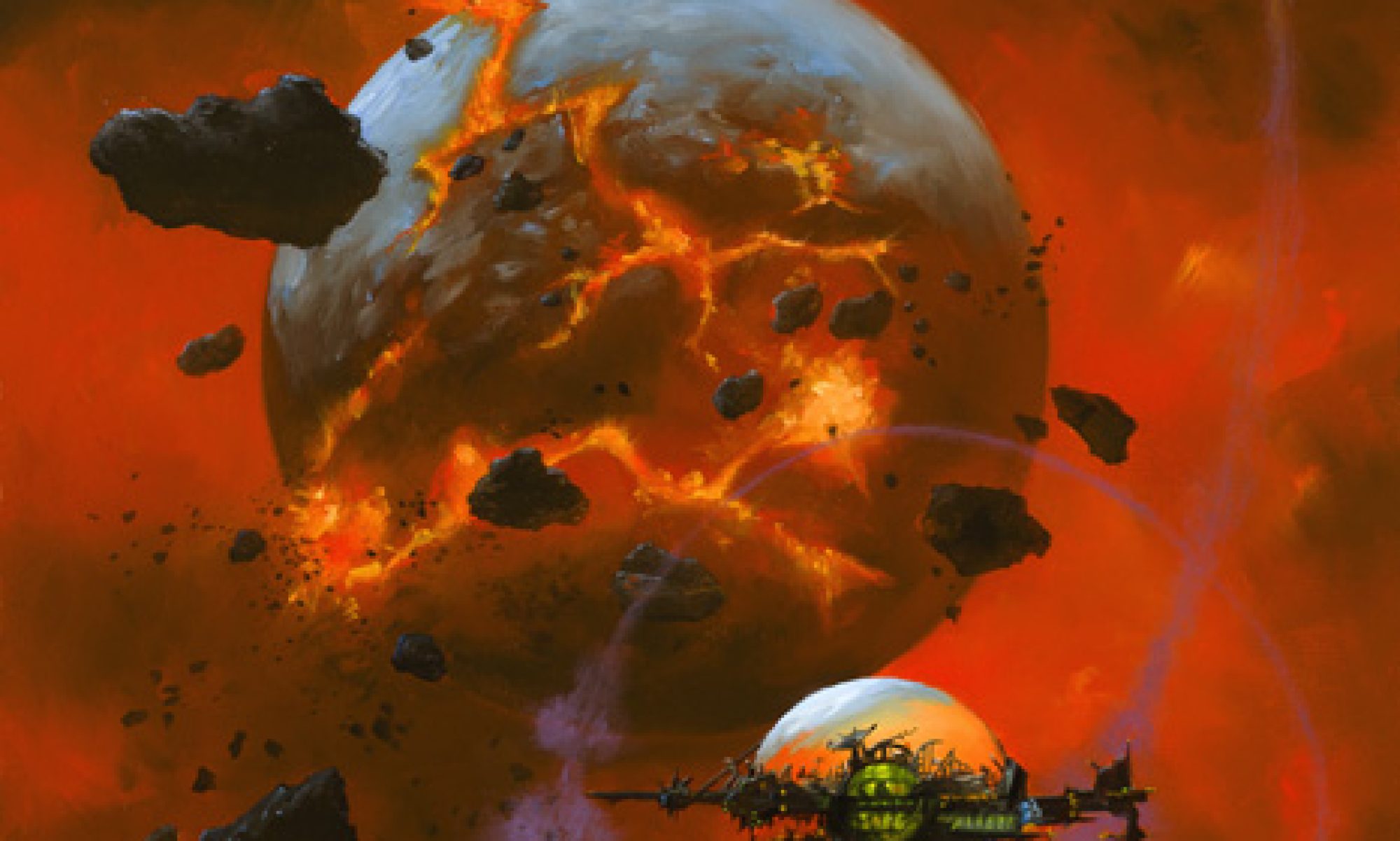
Interesting goings-on in our night sky recently – check out this amateur video of something big hitting something even bigger: Mysterious Impact Flash on Jupiter.
Now, understand I use the “amateur” term carefully. There’s a huge global network of astronomers out there who do this stuff purely for fun and personal interest. Some of the equipment they have is astounding, and they got mad skillz. Professional astronomers count on these guys for cataloging phenomena that the Big Dogs just can’t devote scope time to: stuff like variable stars, planetary occultations, Martian dust storms, and comets (many of the named comets were discovered by non-professionals).
Apparently that list also includes potential civilization-destroying rogue asteroids.
Yeah, I left the best part for last: from iO9, speculation that perhaps Jupiter took one for the team. There’s been a lot of that lately, come to think of it.
So, are the massive outer planets with their deep gravity wells actually a picket system for the smaller inner planets – namely, the ones that could support life? More specifically, ours?
This is a theory which has been gaining traction over the years. Jupiter, Saturn, Uranus (stop giggling), and Neptune patrol the far reaches of our solar system, sucking in or otherwise diverting species-threatening chunks of rock and ice that otherwise might find themselves on orbits that intersect ours at really inconvenient times. Like, you know, when we’re in the same place.
NEO (Near-Earth Object) detection has been getting more and more attention of late, but an observer’s position on our globe makes a big difference: if you’re in North America, most of the southern sky is permanently out of reach. If you’re in Australia, the problem is reversed. And as I understand it, there isn’t a lot of observing capability in the southern hemisphere. If you look at the distribution of population and land mass, it’s not hard to see why. But the rocks are still out there.
NASA has proposed a manned mission to a NEO using the Orion spacecraft it’s developing, and there are plenty of candidate asteroids out there. I’m all for it if they can afford it. Besides going farther than the Moon, to something humans have never encountered, it’s a good idea to understand these things better so as to be able to deflect or destroy them before one of them eventually gets pitched through the strike zone right into home plate.
 So could NASA do it? Sure, if they ever get Orion flying. The whole idea is that it would need less delta-V than a lunar mission and it could be done without a specialized lander – so it’s less of an engineering hurdle and more of a logistics problem. LockMart has already studied this extensively, calling it the “Plymouth Rock” mission.
So could NASA do it? Sure, if they ever get Orion flying. The whole idea is that it would need less delta-V than a lunar mission and it could be done without a specialized lander – so it’s less of an engineering hurdle and more of a logistics problem. LockMart has already studied this extensively, calling it the “Plymouth Rock” mission.
Could private space do it? Well, ya’ll can probably guess how I feel about that. Once a manned Dragon is ready, I’ll bet SpaceX could put a mission together in short order if they really wanted to.
This is why building routine low-cost access to space is important: it enables us get out there and do something about it. Space travel isn’t easy or inherently safe, but there’s no reason the mechanical aspects of it can’t be made reliable and modular. Which of course is exactly what SpaceX, Bigelow, XCor, Masten, et al., are trying to do.
Think about this: what would you need to put together an asteroid mission?
Well, there’s the transportation up and down: Dragon.
How about a crew habitat and life support? Bigelow Sundancers would be a good start.
Propulsion? I don’t know, maybe existing Centaur kick-stages or whatever that Russian booster Space Adventures is using for their lunar orbit tourist flight.
Get the idea? The basic components either exist or are in development with test articles already flown in orbit. But as they say, the devil’s in the details: radiation shielding being the most obvious. Leaving the protection of the Van Allen belts is a real hazard – the Apollo program didn’t really address it, placing their faith in probability. That is, the missions were of short enough duration that the likelihood of being fried by a Coronal Mass Ejection was acceptably low. But they also recognized that if they kept going, it would eventually happen. A two or three month flight to an asteroid raises the odds significantly.
Which brings us back to my point: none of this is without risk. But nothing worth doing ever is. In the meantime, if you want to get a good idea of the sort of widespread mayhem even a relatively small asteroid or comet could produce, check out this handy little Calculator of Mass Destruction.
And be thankful that our solar system has been blessed with these gas giants which are not only nice to look at, but which protect us from all manner of big space junk.
